Occupational Safety Training for Operating CT Scan Machines
99,000 ₫
Note: The above price is calculated per person and may vary depending on the number of trainees participating in the course and market fluctuations. For more accurate pricing support, please refer to the pricing list or contact our consulting staff directly.
Occupational safety is an important issue when operating the CT scanner and needs to be addressed promptly to ensure the health and safety of workers and enhance the reputation of businesses here. The Occupational Safety Training is one of the effective solutions to raise awareness on how to prevent occupational accidents for workers operating the CT scanner.
Table of Contents
Toggle1. Overview of CT Scanner
a. What is a CT Scanner?
A CT scanner is a medical diagnostic device that uses specialized imaging technology to create cross-sectional images of the human body or other objects. The CT scanner utilizes X-rays and computers to generate detailed images of the body, assisting doctors in diagnosing and evaluating medical conditions.
Using a CT scanner helps doctors quickly and accurately diagnose medical issues such as trauma, cancer, cardiovascular diseases, infections, and many other conditions. This provides critical information for treatment and helps improve patient outcomes.

b. How a CT Scanner Works
The operating principle of a CT scanner is based on tomography, combining the use of X-rays and computers to create cross-sectional images of the body or object without surgery. The main steps in the CT scanning process are:
- X-ray generation: The CT scanner uses an X-ray source to generate X-rays that will pass through the body or object being examined.
- Rotation around the patient or object: The patient or object is placed on a movable table at the center of the CT scanner. The table moves automatically, while the scanner head rotates around the patient or object to collect data from multiple angles.
- Data collection: As the scanner rotates, sensors in the CT scanner collect data on how X-rays are absorbed or reflected by structures within the body or object. This data includes the degree of X-ray absorption by different structures.
- Data processing: The collected data is sent to a computer, where complex algorithms analyze the information and create 2D or 3D images of the target area. This process involves calculating how X-rays interacted with internal structures.
- Image display: The final result is an image containing detailed information about internal structures. This image is displayed on a computer screen for doctors and medical staff to view and analyze.

c. Industries Using CT Scanners
CT scanners are mainly used in the medical field, particularly in the following areas:
- Diagnostic medicine: CT scanners are an essential diagnostic tool, helping doctors to diagnose and evaluate medical issues such as trauma, cancer, cardiovascular diseases, digestive diseases, lung conditions, endocrine disorders, and more.
- Medical research: CT scanners are also used in medical research to develop new diagnostic methods, study diseases, and gain a deeper understanding of the structure and function of the body.
- Surgery and treatment planning: CT images provide detailed information about internal structures, assisting doctors and surgical teams in treatment planning, tumor localization, identifying the position of organs and tissues, and ensuring precise and safe surgery.
Additionally, CT scanners can be used in other industries such as material quality inspection in industry or in aviation security and safety. However, their primary application remains in the medical field.

2. Overview of Occupational Safety Training for Operating CT Scanners
a. What is Occupational Safety Training?
- Occupational safety training for operating CT scanners consists of sessions that raise awareness on preventing workplace accidents. Workers who directly operate CT scanners belong to Group 3.
- The training course helps workers recognize hazards and prevent risks, minimizing workplace accidents during operations.
REGISTER FOR OCCUPATIONAL SAFETY TRAINING SERVICE
b. Training Duration
Initial Safety Training Duration
- Total training time is at least 24 hours, including testing.
- 8 hours of theoretical lessons on safety policies and labor hygiene laws
- 8 hours of theoretical lessons on basic occupational safety and hygiene knowledge
- 4 hours of theoretical lessons on specialized training content
- 2 hours of practical lessons on specialized training content
- 2 hours of theoretical testing at the end of the course
The safety training center arranges multiple sessions based on the workers’ schedule. Typically, there are 6 sessions over 3 days, provided the company can arrange continuous training.
Periodic Safety Training Duration
- Before the occupational safety card expires, workers must undergo periodic occupational safety training with a duration of at least 50% of the initial training time.
Explanation: The total duration of periodic safety training is at least 12 hours, including testing. After completing the course and passing the test, workers are reissued or renewed their occupational safety card.
c. Training Course Content
| No. | TRAINING CONTENT | TRAINING DURATION (HOURS) | |||
| Total | Including | ||||
| Theory | Practice | Test | |||
| I | Safety policies and labor hygiene laws | 8 | 8 | 0 | 0 |
| 1 | Overview of the system of legal documents on occupational safety and hygiene. | 6 | 6 | ||
| 2 | System of standards and technical regulations on occupational safety and hygiene. | 1 | 1 | ||
| 3 | Specific regulations from state management agencies on safety and hygiene during construction, expansion, or renovation of facilities for production, use, storage, inspection of machines, equipment, materials, and substances with strict safety and hygiene requirements. | 1 | 1 | ||
| II | Basic knowledge on occupational safety and hygiene | 8 | 8 | 0 | 0 |
| 1 | Basic knowledge of hazardous and harmful factors in the workplace. | 4 | 4 | ||
| 2 | Methods to improve working conditions. | 1 | 1 | ||
| 3 | Safety culture in production and business. | 1 | 1 | ||
| 4 | Rights and obligations of employers and employees; policies and regimes on occupational safety and hygiene for workers; functions and duties of safety and hygiene networks. | 1 | 1 | ||
| 5 | Safety regulations, safety signs, safety instructions, usage of safety equipment and personal protective equipment; skills in first aid and occupational disease prevention. | 1 | 1 | ||
| III | Specialized training content | 6 | 4 | 2 | 0 |
| Comprehensive knowledge of machines, equipment, substances generating hazardous factors; risk analysis, evaluation, and management of occupational safety and hygiene; safe working procedures for machines, equipment, and substances with strict safety and hygiene requirements. | 6 | 4 | 2 | ||
| IV | Final safety training test | 2 | 2 | 0 | 0 |
| Total | 24 | 22 | 2 | ||
See more training content of 6 groups
d. Occupational Safety Card
After completing the occupational safety training and passing the test, workers will be issued an Occupational Safety Card (commonly referred to as the Group 3 Occupational Safety Certificate).
The Group 3 safety card displays information such as name, date of birth, specific job and work environment, training duration, red stamp, and signature confirming course completion.
According to regulations on card issuance in Clause 2 of Article 24, Decree 44/2016/ND-CP, there are two cases:
- If the employer and employee have a labor contract, the employer must sign, stamp, and validate the safety card for the trained Group 3 worker after completing the training from the occupational safety training unit and passing the test.
- If the worker is freelance or seasonal and does not have a labor contract, the training unit must sign, stamp, and validate the safety card after the worker completes the training from the occupational safety training unit and passes the test.

3. Hazards for Workers Operating CT Scanners
Operating a CT scanner can pose hazards to workers if safety rules are not followed and preventive measures are not ensured. Below are some common hazards workers may face when operating a CT scanner:
- X-rays: X-rays used during CT scanner operation can be harmful to health if exposure is not managed properly. Workers must follow safety measures to protect themselves from X-ray exposure, including wearing appropriate protective gear such as lead aprons, protective glasses, and adhering to rules regarding exposure time and safe distance.
- Chemicals and hazardous materials: Some CT scanners use contrast agents or reagents to enhance image quality, which may involve contact with hazardous chemicals or materials. Workers must follow safety precautions when handling these substances, including using proper protective equipment and following manufacturer safety guidelines.
- Prolonged work conditions: Operating a CT scanner may require workers to stand or sit continuously for long periods. This can lead to fatigue, muscle strain, and other health issues. Taking regular breaks and performing stretching exercises can help reduce these risks.
- Machine safety risks: CT scanners are complex devices with many moving parts and controls. Workers need training on how to safely operate the machinery to avoid accidents or injuries. Regular maintenance of the equipment is also essential to minimize risks.

Medical staff performing a CT scan on a patient
4. Occupational Accident Control Measures When Operating CT Scanners
To control occupational accidents while operating CT scanners, specific safety measures should be implemented to minimize risks and protect workers’ health. Below are some accident control measures that can be applied:
- Training and instructions: All staff must be trained to operate CT scanners safely and correctly. They should be guided on the machine’s operating procedures, necessary safety measures, and emergency handling.
- Use of personal protective equipment (PPE): Workers should be provided with and use full PPE, including lead aprons, protective glasses, gloves, and ear protection if needed. Ensure that all PPE meets safety standards and is used correctly.
- X-ray control: Implement measures to minimize X-ray exposure, including limiting exposure time, using the lowest radiation necessary for diagnostic imaging, and employing effective shielding techniques.
- Regular maintenance and inspection: Ensure the CT scanner is maintained and inspected regularly according to the prescribed schedule. This ensures safe and efficient operation, reducing the risk of accidents due to malfunctions or technical errors.
- Risk management and safety assessment: Conduct risk assessments to identify and evaluate potential hazards associated with CT scanner operation. Based on these assessments, establish and implement appropriate risk control measures.
- Follow safety procedures: Establish and implement specific safety procedures for operating CT scanners, including emergency protocols, daily operation procedures, and maintenance routines.
- Periodic inspection of CT scanners to detect safety issues such as wear, damage, or mechanical failures, thereby reducing the risk of occupational accidents.
5. Benefits of Occupational Safety Training
An Toàn Nam Việt provides your business with the following benefits after completing occupational safety training courses according to Decree 44/2016/ND – CP on Occupational Safety and Hygiene for companies and enterprises:
- Workers can recognize potential occupational hazards and take preventive measures to avoid accidents.
- Your business can establish risk prevention measures in production, operation, and maintenance processes.
- Reduce costs associated with potential workplace safety incidents.
- Continuous production improves labor productivity and product quality.
- Ensure compliance with occupational safety laws, avoiding legal risks.
- Enhance credibility and professionalism, boosting your brand’s reputation.
Nam Viet’s training courses help individuals protect themselves from external hazards that could lead to injury or, in severe cases, death.
REGISTER FOR OCCUPATIONAL SAFETY TRAINING SERVICES
6. Customer Feedback After Completing Training
An Toàn Nam Việt has years of experience accompanying numerous businesses in Vietnam, especially in southern provinces. This responsibility is invaluable, which is why our Occupational Safety Training programs are increasingly professional. Our growth is driven by positive feedback and suggestions from our partners. Below are testimonials from partners we have served.
See more customer interviews after using our services at An Toàn Nam Việt
7. An Toàn Nam Việt’s Occupational Safety Training Capability
An Toàn Nam Việt is a leading center for high-quality occupational safety training in Vietnam. Training sessions are continuously conducted at factories, production sites, and construction sites across all 63 provinces in Vietnam.
REGISTER FOR OCCUPATIONAL SAFETY TRAINING SERVICES
Occupational Safety Training License
- An Toàn Nam Việt has been inspected and certified by the Department of Safety under the Ministry of Labor, Invalids and Social Affairs for the qualification to conduct occupational safety and hygiene training, strengthening our capacity for occupational safety education.

Occupational Safety Training Qualification Certificate
Training Materials and Lectures
- All training materials are reviewed and approved before being used in safety training courses to ensure accuracy and effectiveness.
- Teaching methods follow Nam Viet’s standard approach, developed by experts in occupational safety and hygiene training, maximizing knowledge retention for participants.
Facilities
- Classroom environment management enhances teaching performance and learning effectiveness.
- Our training facilities feature spacious classrooms meeting standards for area, lighting, and training equipment.
8. Nationwide Reputable Safety Training Center
At An Toàn Nam Việt, occupational safety training is a top priority. We aim to equip workers with knowledge to protect themselves, contributing to national development.
To ensure effective training, we meticulously prepare every detail, from teaching tools and equipment to curriculum, documents, sound, and lighting.
Our instructors are experts with years of experience, including research on hazard identification and prevention across industries.
Lectures are practical, engaging, and easy for workers to understand, aligning with Decree 44/2016/ND-CP.
Workers learn hazard prevention methods and self-protection techniques that can be applied in real work situations.
Our safety training center proudly provides professional and reputable occupational safety training with advantages including:
- Competitive training costs without compromising quality.
- Flexible training schedules to match company production needs.
- Quick and legally compliant certification procedures.
- Experienced instructors with years of expertise.
- Classroom control to enhance teaching efficiency and learning outcomes.
- Lectures tailored to workplace safety for businesses.
- Dedicated and professional support for clients.

9. Additional Occupational Safety Training Resources
- Occupational Safety Training Materials
- Occupational Safety Materials for CT Scanner Operation
- Occupational Safety Training Test Materials
- Occupational Safety Quiz for CT Scanner Operation
- CT Scanner Occupational Safety Training Slides
1 review for Occupational Safety Training for Operating CT Scan Machines
No comments yet

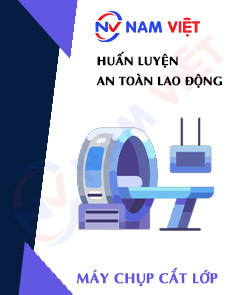
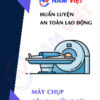
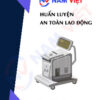




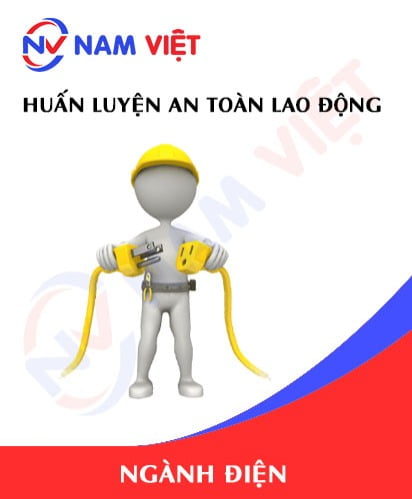




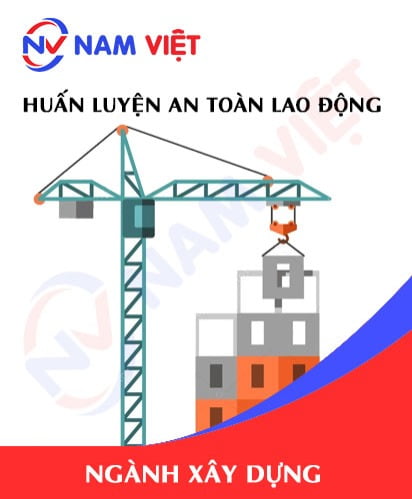
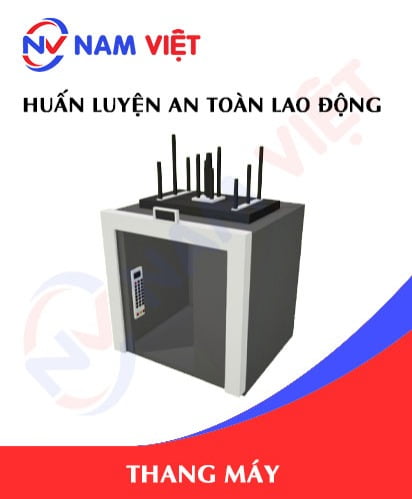
phanminhhang341
Giảng viên dạy rất sinh động dễ hiểu!